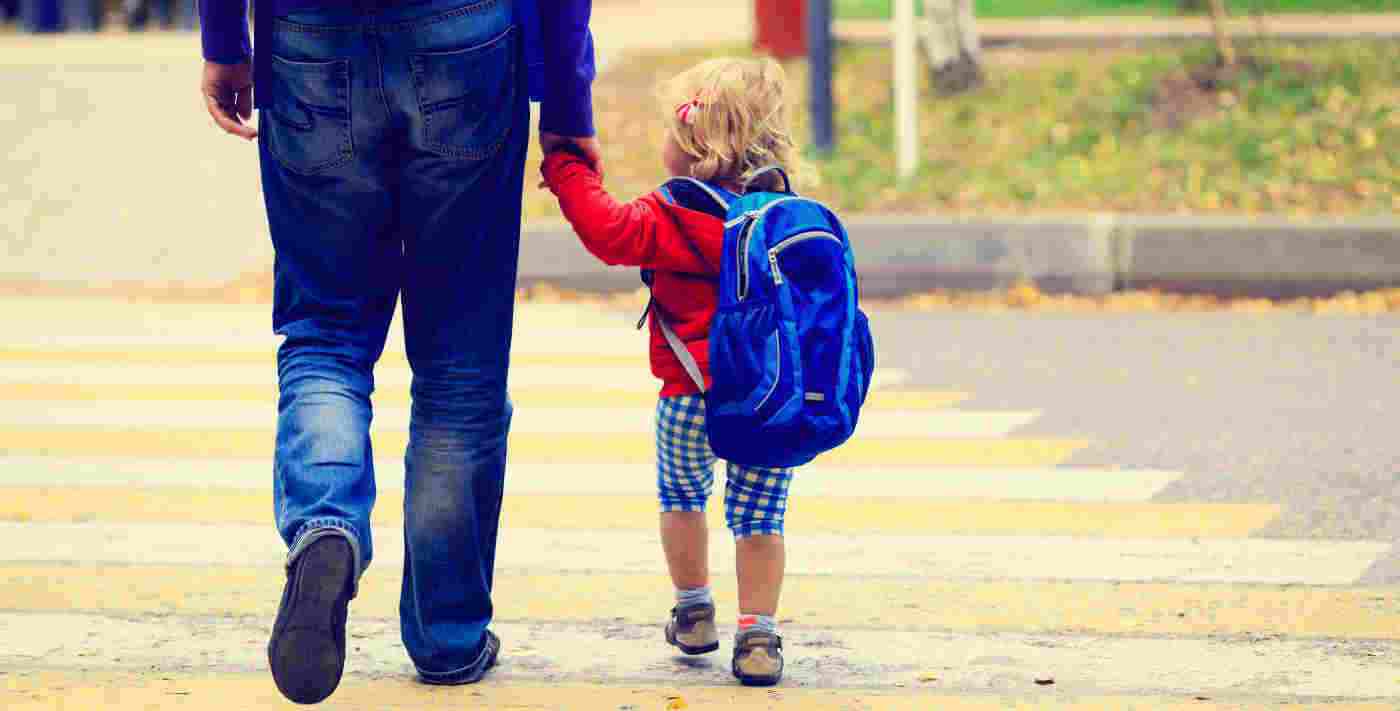
What To Tell Your Kids About The Florida High School Shootings – Tips On School Safety For Children And Resource Links For Violence Prevention
 PUBLISHER’S NOTE: Yesterday, February 16th, Psychotherapist Donna F. Ferber entered the world of Facebook with her first Facebook post. The subject was a horribly depressing but a timely one: What to tell your kids about the Florida High School shootings. Donna ALWAYS shares terrific advice in her blog columns. I thank her for sharing this valuable public service by providing a link for both parents and teachers (which was posted in 2016) by the National Association of School Psychologists (NASP).
PUBLISHER’S NOTE: Yesterday, February 16th, Psychotherapist Donna F. Ferber entered the world of Facebook with her first Facebook post. The subject was a horribly depressing but a timely one: What to tell your kids about the Florida High School shootings. Donna ALWAYS shares terrific advice in her blog columns. I thank her for sharing this valuable public service by providing a link for both parents and teachers (which was posted in 2016) by the National Association of School Psychologists (NASP).
Here is what Donna concisely posted, “My first post on Facebook. Helpful information in troubling times. I look forward to a time when we don’t need to have these difficult conversations”.
Here is the link she provided as a resource to our teachers and parents:
Talking to Children About Violence: Tips for Parents and Teachers
The information, in my mind, warrants posting it in full. Here it is:
“High profile acts of violence, particularly in schools, can confuse and frighten children who may feel in danger or worry that their friends or loved-ones are at risk. They will look to adults for information and guidance on how to react. Parents and school personnel can help children feel safe by establishing a sense of normalcy and security and talking with them about their fears.
- Reassure children that they are safe. Emphasize that schools are very safe. Validate their feelings. Explain that all feelings are okay when a tragedy occurs. Let children talk about their feelings, help put them into perspective, and assist them in expressing these feelings appropriately.
- Make time to talk. Let their questions be your guide as to how much information to provide. Be patient; children and youth do not always talk about their feelings readily. Watch for clues that they may want to talk, such as hovering around while you do the dishes or yard work. Some children prefer writing, playing music, or doing an art project as an outlet. Young children may need concrete activities (such as drawing, looking at picture books, or imaginative play) to help them identify and express their feelings.
- Keep your explanations developmentally appropriate.
- Early elementary school children need brief, simple information that should be balanced with reassurances that their school and homes are safe and that adults are there to protect them. Give simple examples of school safety like reminding children about exterior doors being locked, child monitoring efforts on the playground, and emergency drills practiced during the school day.
- Upper elementary and early middle school children will be more vocal in asking questions about whether they truly are safe and what is being done at their school. They may need assistance separating reality from fantasy. Discuss efforts of school and community leaders to provide safe schools.
- Upper middle school and high school students will have strong and varying opinions about the causes of violence in schools and society. They will share concrete suggestions about how to make school safer and how to prevent tragedies in society. Emphasize the role that students have in maintaining safe schools by following school safety guidelines (e.g. not providing building access to strangers, reporting strangers on campus, reporting threats to the school safety made by students or community members, etc.), communicating any personal safety concerns to school administrators, and accessing support for emotional needs.
- Review safety procedures. This should include procedures and safeguards at school and at home. Help children identify at least one adult at school and in the community to whom they go if they feel threatened or at risk.
- Observe children’s emotional state. Some children may not express their concerns verbally. Changes in behavior, appetite, and sleep patterns can also indicate a child’s level of anxiety or discomfort. In most children, these symptoms will ease with reassurance and time. However, some children may be at risk for more intense reactions. Children who have had a past traumatic experience or personal loss, suffer from depression or other mental illness, or with special needs may be at greater risk for severe reactions than others. Seek the help of mental health professional if you are at all concerned.
- Limit television viewing of these events. Limit television viewing and be aware if the television is on in common areas. Developmentally inappropriate information can cause anxiety or confusion, particularly in young children. Adults also need to be mindful of the content of conversations that they have with each other in front of children, even teenagers, and limit their exposure to vengeful, hateful, and angry comments that might be misunderstood.
- Maintain a normal routine. Keeping to a regular schedule can be reassuring and promote physical health. Ensure that children get plenty of sleep, regular meals, and exercise. Encourage them to keep up with their schoolwork and extracurricular activities but don’t push them if they seem overwhelmed.
Suggested Points to Emphasize When Talking to Children
- Schools are safe places. School staff works with parents and public safety providers (local police and fire departments, emergency responders, hospitals, etc.) to keep you safe.
- The school building is safe because … (cite specific school procedures).
- We all play a role in the school safety. Be observant and let an adult know if you see or hear something that makes you feel uncomfortable, nervous or frightened.
- There is a difference between reporting, tattling or gossiping. You can provide important information that may prevent harm either directly or anonymously by telling a trusted adult what you know or hear.
- Although there is no absolute guarantee that something bad will never happen, it is important to understand the difference between the possibility of something happening and probability that it will affect you (our school community).
- Senseless violence is hard for everyone to understand. Doing things that you enjoy, sticking to your normal routine, and being with friends and family help make us feel better and keep us from worrying about the event.
- Sometimes people do bad things that hurt others. They may be unable to handle their anger, under the influence of drugs or alcohol, or suffering from mental illness. Adults (parents, teachers, police officers, doctors, faith leaders) work very hard to get those people help and keep them from hurting others. It is important for all of us to know how to get help if we feel really upset or angry and to stay away from drugs and alcohol.
- Stay away from guns and other weapons. Tell an adult if you know someone has a gun. Access to guns is one of the leading risk factors for deadly violence.
- Violence is never a solution to personal problems. Students can be part of the positive solution by participating in anti-violence programs at school, learning conflict mediation skills, and seeking help from an adult if they or a peer is struggling with anger, depression, or other emotions they cannot control”
Additional Information On School Safety, Violence Prevention And Children Trauma
NASP has additional information for parents and educators on school safety, violence prevention, children’s trauma reactions, and crisis response at www.nasponline.org .
In addition, here is another valuable resource link from Mental Health America. It also indicates 16 behavioral signs indicating your child might need professional help. Talking To Kids About School Safety
If you or someone you know is in crisis, please call 911, go to the nearest emergency room, call Mental Health America at 1-800-273-TALK (8255) to reach a 24-hour crisis center, or text MHA to 741741 at the Crisis Text Line.
 Donna F. Ferber, LPC, LADC is a psychotherapist in private practice for 30 years in Farmington, Connecticut. She is a licensed professional counselor, a licensed alcohol and drug abuse counselor and an educator. In her private practice, Donna specializes in issues related to life transitions. These include but are not limited to divorce, remarriage, chronic illness, loss, relocation. Donna has been a guest contributor to the Ohio Family Law Blog since 2010. We have enjoyed collaborating on several articles over the years.
Donna F. Ferber, LPC, LADC is a psychotherapist in private practice for 30 years in Farmington, Connecticut. She is a licensed professional counselor, a licensed alcohol and drug abuse counselor and an educator. In her private practice, Donna specializes in issues related to life transitions. These include but are not limited to divorce, remarriage, chronic illness, loss, relocation. Donna has been a guest contributor to the Ohio Family Law Blog since 2010. We have enjoyed collaborating on several articles over the years.
If you want to follow Donna Ferber, LPC on Facebook, I predict that you will no doubt find her posts both excellent and informative. Or, check out her blogs at http://donnaferber.com/category/blog-entries/
© 2018, Ohio Family Law Blog. All rights reserved.

Attorney Robert “Chip” Mues has been focusing his legal practice throughout Southwest Ohio primarily in divorce and family law matters since 1978. Chip is passionate about family law and has proudly published the Ohio Family Law Blog since 2007. In addition, he is the managing partner of Holzfaster, Cecil, McKnight & Mues. To learn more about him or the law firm, visit the firm’s website at www.hcmmlaw.com. Appointments are available in person, over the phone or by Zoom. Call us at 937 293-2141.


